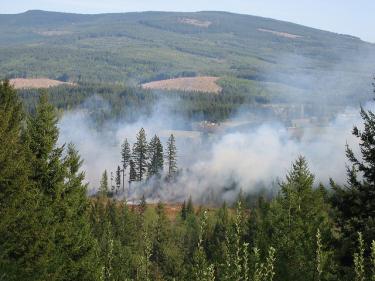The Facts About Fire
Fires happen when ignition (from a lightning strike or a careless bonfire, for example) meets available fuel (such as dry vegetation), and warm, dry air fans the flames.
That’s why the fire season tends to coincide with high temperatures and dry conditions. In the eastern U.S., fire season lasts from March through May, while the West sees most of its fire activity from June through October.
Fires are an important and necessary part of the lifecycle for many different kinds of ecosystems. For as long as forests and grasslands have grown on earth, fires have burned them. In fact, some tree species, like lodgepole pines and aspens, need fire to stimulate their growth.
Fires have also been used by people as a way to manage lands, whether to clear land for farming, get rid of unwanted pests, or to restore nutrients to the soil.
In the United States, fires were often used by American Indians and early European settlers to reshape their environment. But in the early 1900s, people began to worry about fire’s effects on their land and decided that preventing and suppressing all fires was the best way to protect their forests.
Suppression stayed the preferred policy well into the 1980s—remember Smokey Bear?—and it changed the nation’s forests. Without the natural cycle of burning and growth, forests grew very dense. Experts think that overgrown forests (which translate into lots of available fuel), higher temperatures and dry conditions have created wildfires that burn bigger and hotter than before—sometimes so big and hot that they damage forests instead of helping them.
Now most foresters and landowners accept frequent fire as part of a healthy forest. They carefully allow or even start controlled burns to manage natural areas and reduce the risk of out-of-control, devastating fires.
*contains information adapted from the Project Learning Tree Focus on Forests and Focus on Risk curriculum.
How can I get more tips?
It’s simple! Enter your email below.

